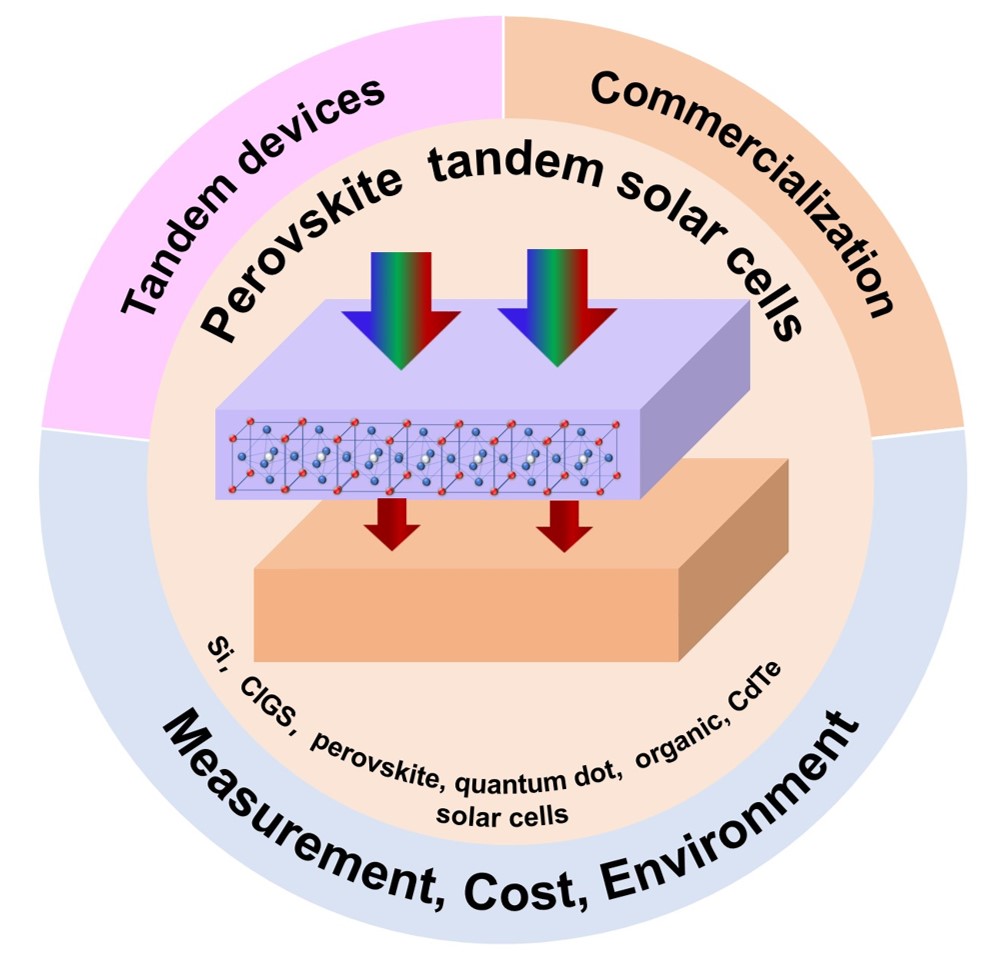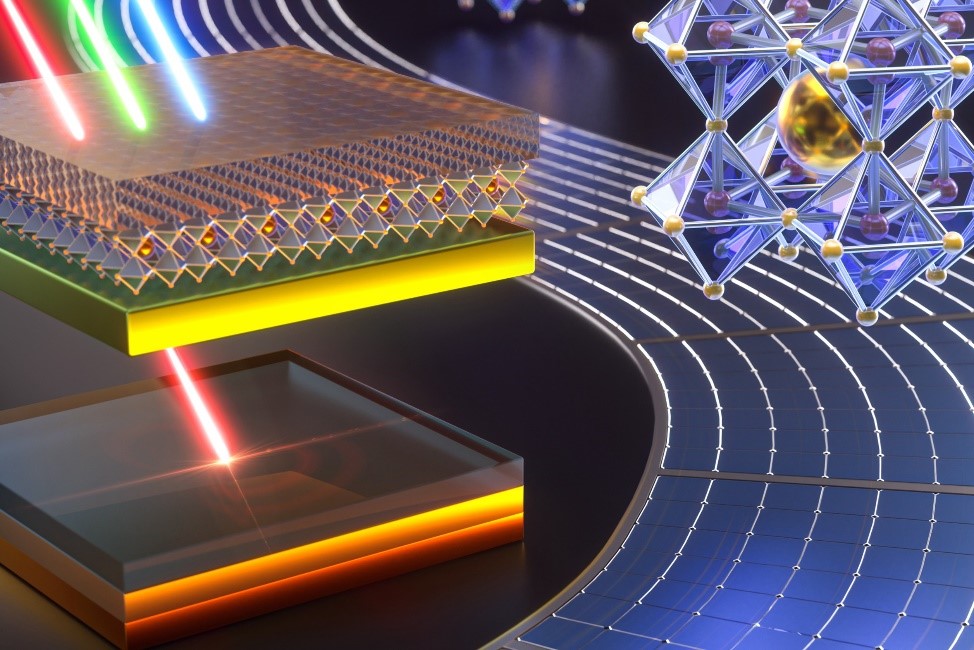
Photovoltaic (PV) solar cells are one of the key technologies for realizing a decarbonized economy and offer sustainable energy supply. In order to continue to drive down the overall cost of installed PV generated electricity, increasing the overall power output of the module per unit area, i.e. power conversion efficiency, is necessary.
Multi–junction (tandem) solar cells consisting of multiple light absorbers with considerably different band gaps show great potential by absorbing light in a broader range of wavelengths. Perovskite solar cells (PSCs) are ideal candidates for tandem solar cells due to their tunable band gaps, high efficiency, and easy fabrication.
An international research group led by Dr. LI Hui from the Institute of Electrical and Engineering of the Chinese Academy of Sciences and Dr. ZHANG Wei from University of Surrey summarized the development of the state–of–the–art perovskite tandem solar cells. The review was published in Chemical Reviews.

Fig1. Schematic overview of the content of this review (Image by LI Hui and ZHANG Wei)
The researchers introduced the strategies for improving the power conversion efficiencies of perovskite tandem solar cells in combination with various types of solar cells. These strategies included but not limited to the design considerations on the transparency of perovskite absorbers and metal electrodes, protective layers, and recombination layers/tunnel junctions, with a particular focus on the band gap tuning and thickness adjustment of active layers.
In addition, a range of measurement techniques for the characterization of perovskite tandem solar cells were shown, which covered other core issues that related to the large–scale applications and commercialization.
They also gave perspectives on the future development of perovskite tandem solar cells including: large–scale fabrication and commercialization, stability and reliability assessments, applications, and lead related environmental issues.
All in all, an effective strategy is provided for the development of the PVs research and industry due to the device performance enhancement and cost reduction for almost all types of solar cells applied in perovskite tandem solar cells.
This work was supported by the National Key Research and Development Program of China and the Newton Advanced Fellowship.

Fig. 2. Schematic structure of perovskite tandem solar cells (Image by LI Hui and ZHANG Wei)

86-10-68597521 (day)
86-10-68597289 (night)

52 Sanlihe Rd., Xicheng District,
Beijing, China (100864)

